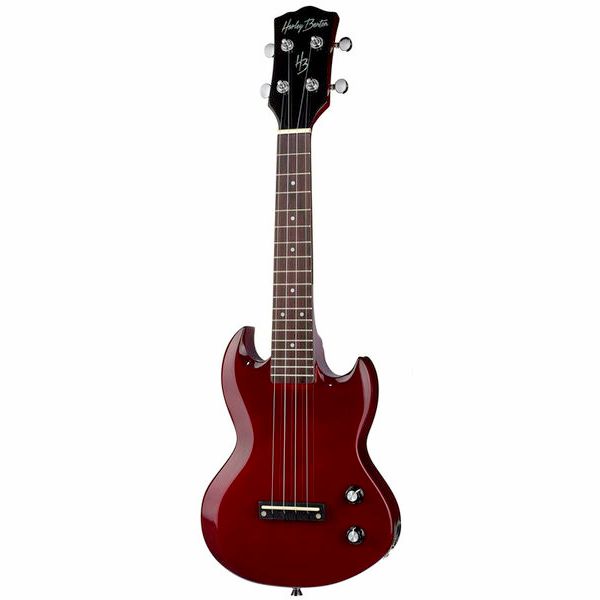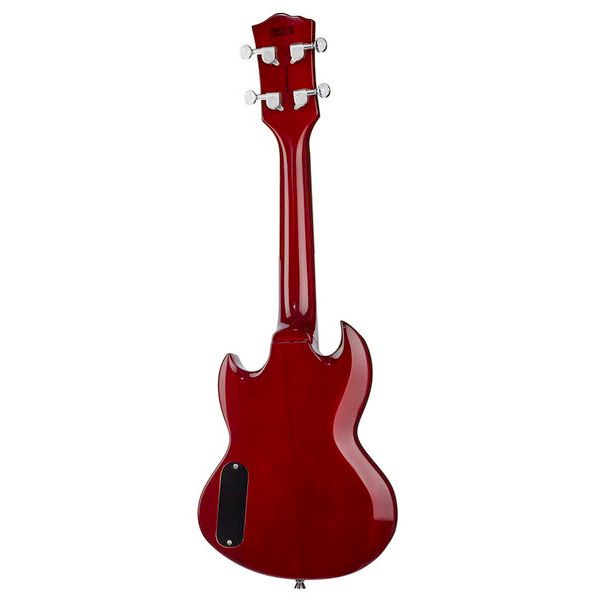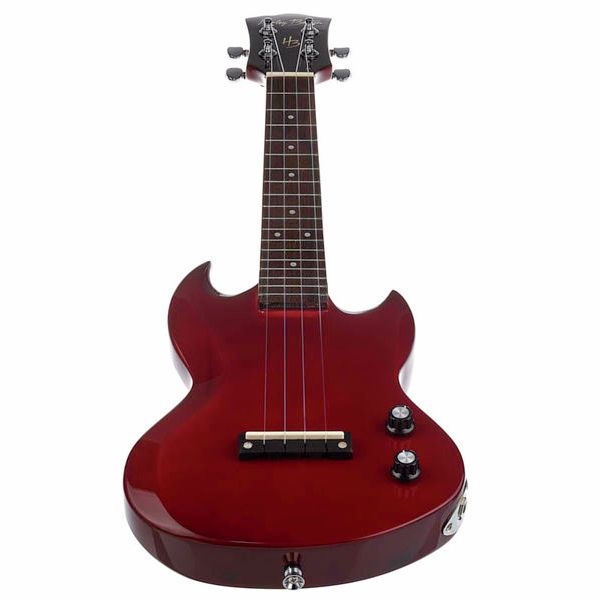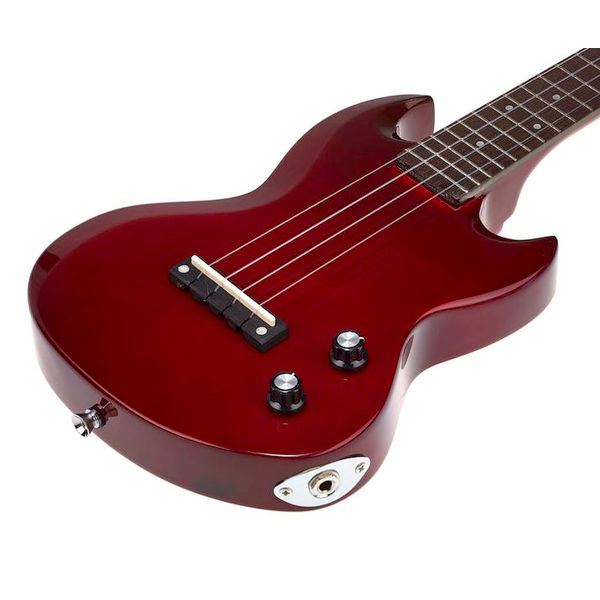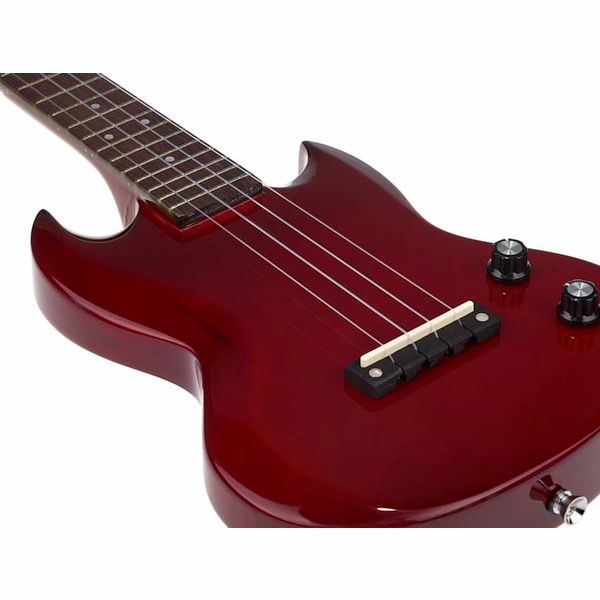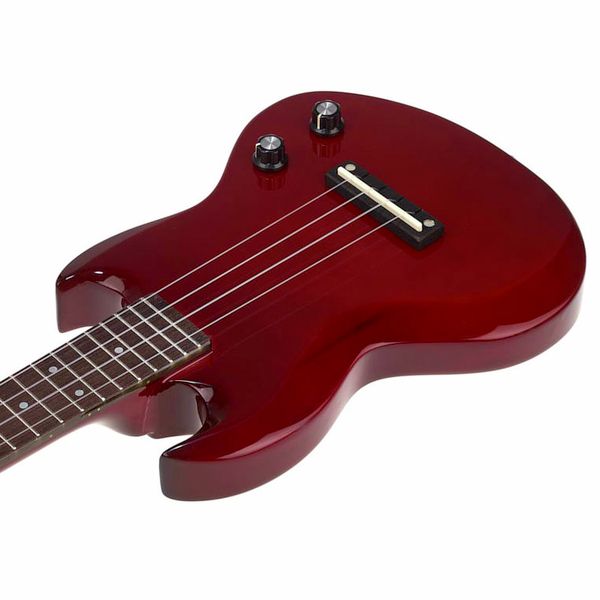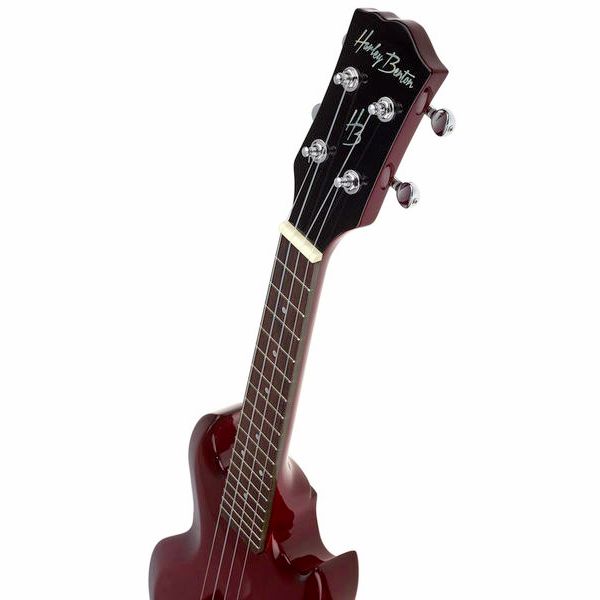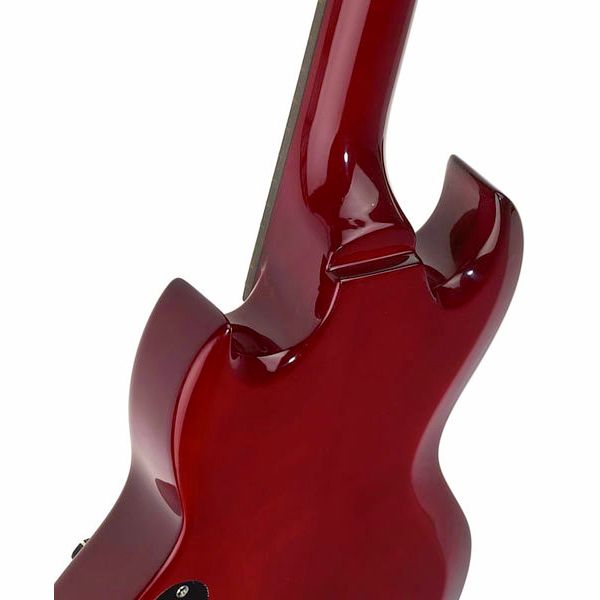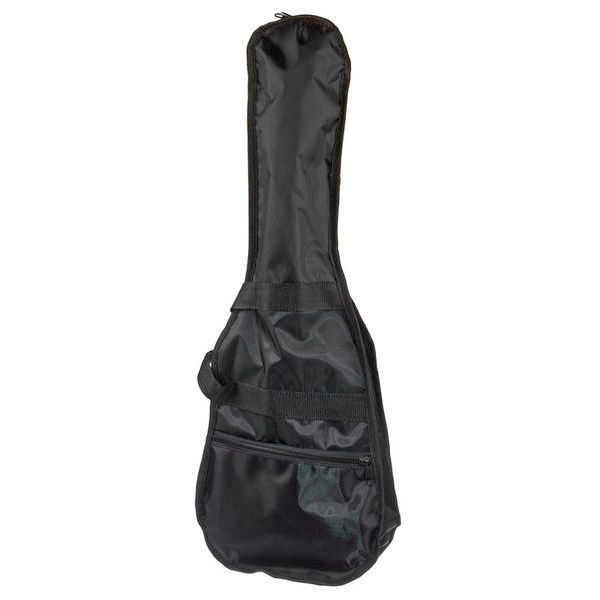This is a nice looking and solidly crafted instrument. Note that I did not say "finely" crafted- that's where you come in.. It badly needs a string height adjustment as well as an intonation fix- and you can do this by loosening the strings and then gently pulling the plastic riser that should be the "bridge" from the riser. Then you can sculpt it with an x-acto knife to make its "edge" recede a bit and then re-test...in the end on mine I had to move the string contact point back some 1,5 mm and I did that by scraping at the plastic to create a new edge further back. In the end I got something that looks like a "compensated acoustic guitar bridge" -look it up for refference .A quick way of intonating an uke is using..matchsticks! Take a match and slide it behind the nut- so now the strings have a point of contact further back; if that improves tuning, you need a compensated nut made, or leave the matchstick in (you can cut from its thickness to tune). If it makes matters worse, and you need to lengthen the strings, then you must gently scrape te leading edge of the bridge towards the back (angling it slightly ,as if sharpening a blade or creating a cutting edge). Take good care to eventually round this edge with a bit of sandpaper once you are done, in order to avoid cutting the strings.Do this with the bridge off the instrument! place back, re-tune, re-test, and re-sculpt if necessary- I know it's a lot of work but you do not need toolmarks on the finish!
Before all that , WARNING! you should sort out string height first if necessary by filing the bottom of the bridge with a bit of sandpaper or a fine file.The strings on mine were a mile high and it was all due to a very high bridge. Once string height is set proceed with the intonation. Careful as you handle the bridge, the piezo element beneath it is responsible for all the sound in this instrument. It is not glued, it is just crammed in there tightly under it and it is delicate. Pull straight up on the bridge and on reinstalling do not press down too hard. After the intonation and string height are ok, here comes the hard electric re-building part: you will need either copper foil (gardener's shops carry it , for keeping snails at bay, or electronic part shops, or the *bay or the *zon..or..) or conductive paint. I recommend copper foil -has lower resistivity and also holds better in time, as conductive paint becomes less so in time once properly and totally dry. Wrap a narrow sheet of adhesive two faced auto sticky tape around the electronics cavity if the copper foil is not already adhesive on one side and complete the shielding by leaving a bit of a "lip" that goes out of the cavity and along the top so to make contact with the shielding stuck from the factory on the small plastic lid (there's a sliver metallic foil there). Add another bit of tape in electrical contact with the shielding done so far all around the walls of the output jack socket cavity and as always, leave a lip out so that when mounted, the jack plate itself screws in this conducting tape lip, completing the shielding. Warning: Do use a bit of NON conductive, insulating, etc tape (or even cellophane or paper adhesive tape) around the wires going to the jack and the exposed jack lugs , you do not want the shielding tape you just carefully installed to short out your signal.
Once that's over with, it should be finally tunable and quiet. Too quiet, in fact, as some rightly said. But the posters that described the electrical repairs in detail are totally correct : this thingie needs a total electrical makeover. Do not be afraid, although it sounds radical it is just about switching some wires around and switching the provided cap with a 1.5 nanofarad or 2 nF as they previously advised. For the correct wiring diagrams, search online for "gibson junior 50's wiring" for a good source of inspiration. Yes it is for "something else entirely" but it's a good example of a tone-volume stack for one pickup, and the grand total of parts is : one TONE capacitor- that you will exchange as previously discussed, one TONE POT - the linear one from the two on this little uke, and one VOLUME POT- make sure it is the logarithmic one . Yes these things are wired "bass ackwards"from the factory and you must correct that. Searching diagrams for gibson junior wiring will provide you with some four or five different variants- just observe where the pickup , output jack and capacitor goes and how the wires are soldered and where, and to the same regardless of what was previously in your little uke. In the end after all this work you are rewarded with a surprisingly good sounding instrument. After all these mods, you will be able to pass this through different amp sims and mod your sound in really sick ways, and yes this thing can "metal" for realz if all solder joints are correct... high gain amps? check! High volume with almost no buzz at all ? Check! Dead silent on clean between the notes ? And clear and adequately loud sound when playing these ontes? Check.
If the volume is still low or uneven across the strings, please loosen the strings and gently pull out the bridge once more, and look at the piezo pickup stuck underneath. It might have been pushed sidewise a bit and needs to be set dead center and not twisted . Re-place and put the bridge back vertically, gently, retune.. good luck! DO NOT pull on the little output shielded cable on one end of the piezo sensor, as the whole thing is very fragile and that particular connection is hard to repair. If nothing works for the volume, you might have a broken piezo pickup, and you can replace it with a standard one from the guitar shops, but you have to cut it to length (delicate operation) and re-do the insulation on the exposed end. If a violin piezo pickup is available (of the same "stick" under the bridge type) it might be possible to just drop it in without any modification. Keep the old broken part, take measurements before buying.. in the end you'll be happy with a real rock uke. A baby dragon!


